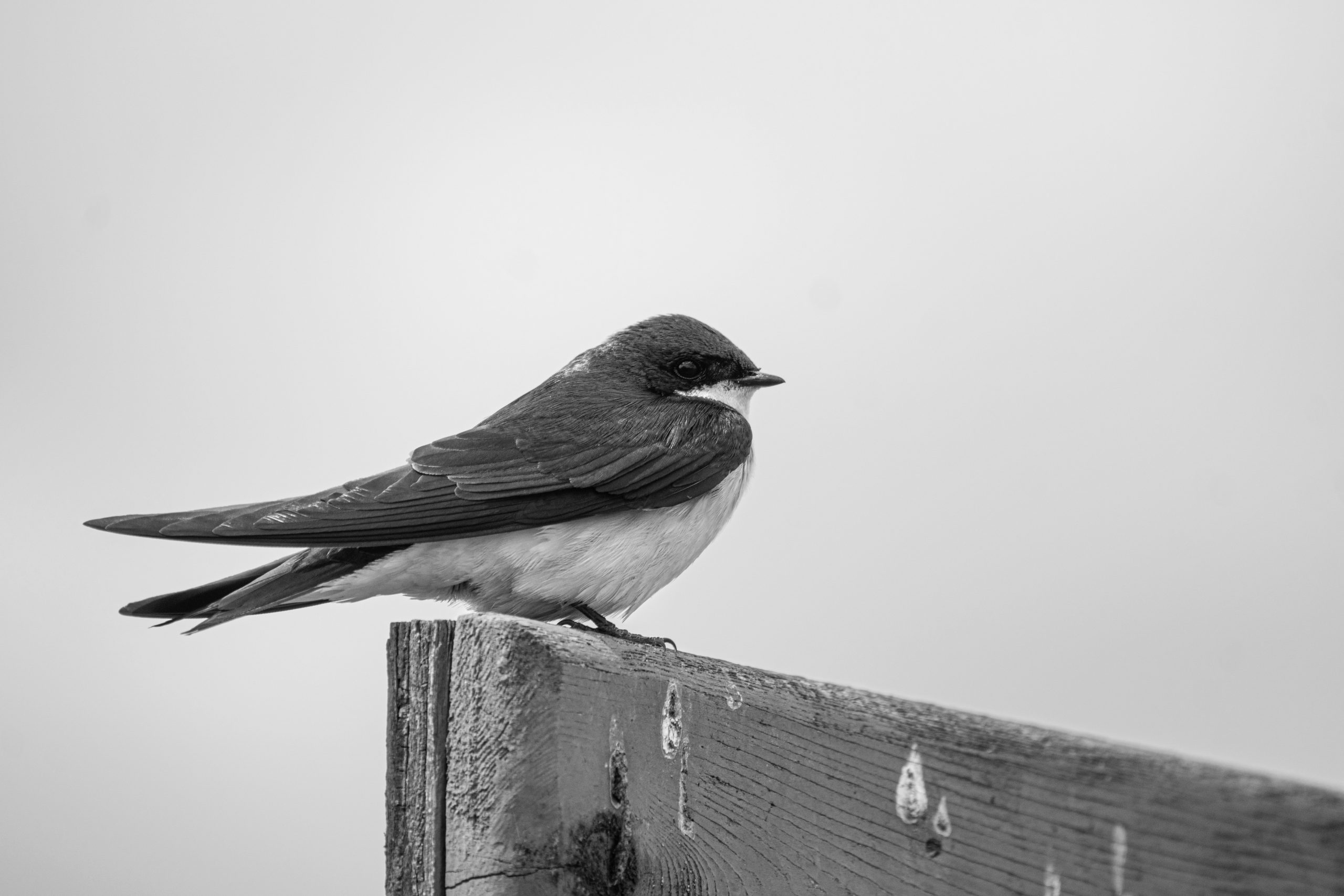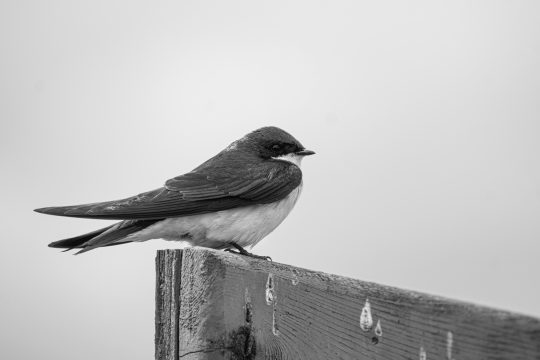Bird of the week: tree swallow
About: Male tree swallows are a beautiful, iridescent blue-green above with a white underside and black wings. Females and immatures are brown above with limited or no iridescent feathers.
Where to find this bird: Look for tree swallows hunting for insects over the Fox River. When not catching insects on the wing, they can be seen resting along one of the river trails. They particularly like open tree branches that overhang the river.
When to find this bird: Late March – early October.
Fun fact: Tree swallows return to their nesting grounds before other swallows and reach northern parts of their range while the weather is still unpredictable. They primarily eat insects, but can also eat plant foods, which helps them survive cold snaps and wintery weather.
Bird language
While I am out birding, I am always listening intently to birdsongs. Not only is it how I primarily identify birds, but it is also how I can understand what is going on in the landscape. Birds vocalize for many different reasons: to attract a mate, defend a territory, warn of predators, share new food sources or keep in touch with fellow birds in a flock. If one can understand what kinds of vocalizations are going on, it can help one understand what is happening in the landscape and locate hidden owls and mixed flocks or understand a bird’s territory. This knowledge is how I primarily locate owls in broad daylight when I’d otherwise walk right past without noticing.
First, it is important to understand some basic bird behavior and understand different birds’ roles within the landscape. Birds in all landscapes have different ways of communicating, but the most easily observable are the relationships of songbirds in grasslands, forests and urban settings.
The vast majority of songbirds, also known as passerines, work together to stay away from predators, whether the predators are small weasels, snakes or raptors. These passerines, for the most part, do not threaten each other for survival, with the exception of a few more complex situations, such as corvids (jays and crows) who help locate and mob many predators, but will also prey on songbirds on occasion and often raid nests.
Birds will mob predators in an attempt to chase the threat away and warn other birds of the danger. Most raptors and other predators get mobbed by larger passerines (like corvids) and daring smaller birds (such as chickadees and nuthatches). If you notice this behavior, there is likely an owl or hawk nearby.
However, in my experience, accipiters (sharp-shinned hawks, Cooper’s hawks and goshawks, which are very rare in Wisconsin) are treated a bit differently because they are extreme threats to passerines, as their main diet is small songbirds, and they are extremely agile hunters able to chase birds on the wing through thick forest cover. Often when one shows up in an area, all birds go quiet, and sentinel birds (a role robins often fill) go up at a distance, sounding the alarm and ready to take cover as soon as the accipiter moves.
Understanding contact calls can also be very useful in understanding what is happening in the landscape. Contact calls are often very short calls made by birds that flock and act as very brief check-ins to make sure everything is okay with the other birds. This behavior only happens when there are no immediate threats and means that things are relatively safe. Contact calls and feeding calls can also help locate flocks and understand what food sources are available and where.
If you want to learn more about bird language, I recommend visiting a single location frequently, ideally sitting in one spot for an extended period, as this allows you to blend into the landscape and watch closely how the birds behave. Focus on observing the behavior of common birds: American robins and black-capped chickadees are particularly insightful species for studying behavior, as well as corvids like blue jays — but remember they can be tricksters! If you want to learn more about bird language, I also recommend Jon Young’s “What the Robin Knows.”


